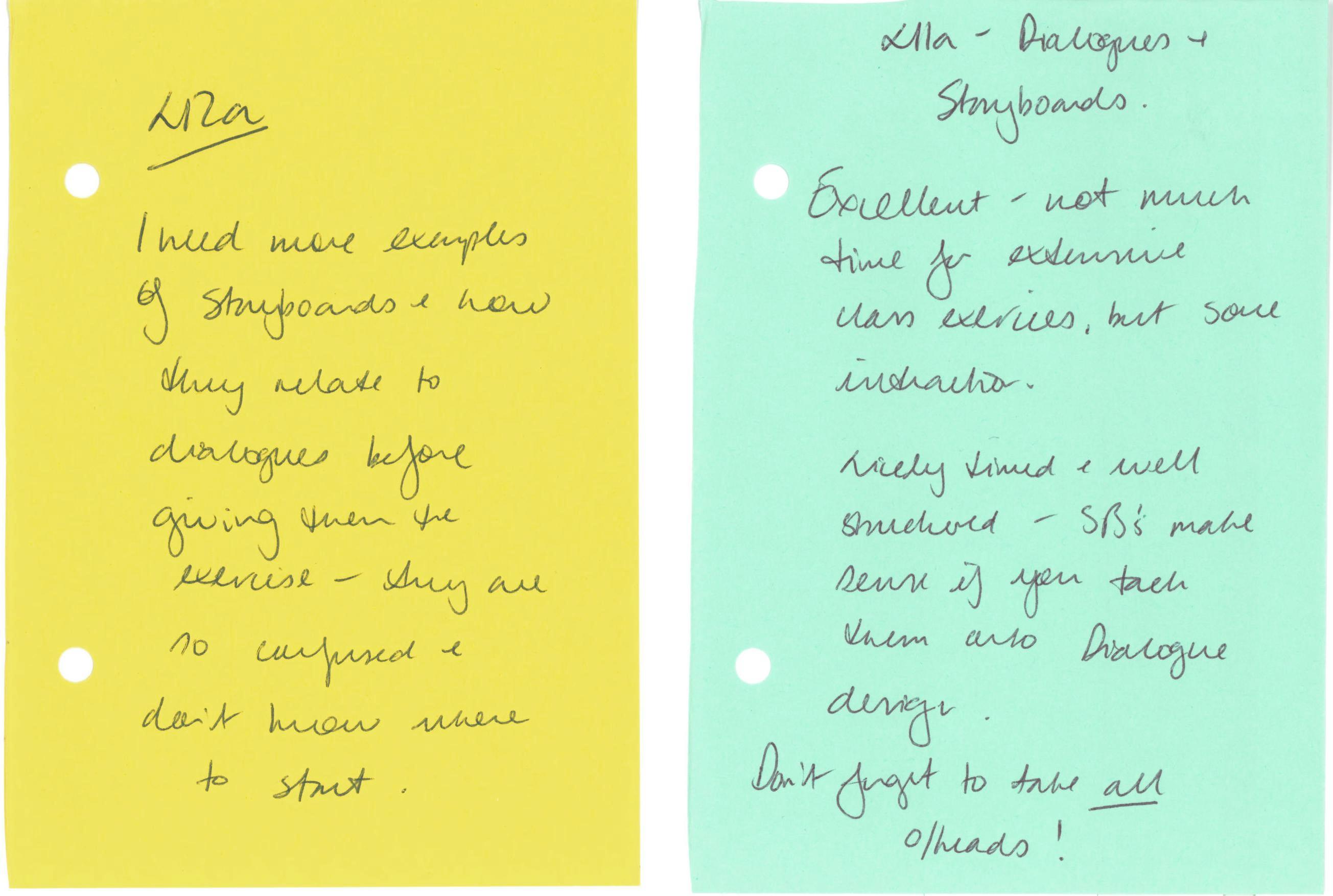The official specification for the five-week course in introductory HCI that is given to students in first year is given below – it is what is placed on the department’s web page, and is the description that has been through formal university approval: it has been unchanged for several years
Here is the unofficial specification I give to the students at the start of the course (I have interpreted the official specification in my own special way!)
Aims: I only have five weeks to introduce HCI to these first year students – there is a limit to the scope and extent of detail that is possible in that time. While it may be tempting to spend these few weeks demonstrating impressive interaction possibilities using state-of-the-art technology (as a way of grabbing the students’ interest and ‘hooking them in’), I believe that introducing a fundamental user-centred perspective and attitude as the basis for the rest of the students’ studies is more important than introducing impressive interactive technology. The most important HCI concept basis for Computing Science students is the notion of user involvement in system development – this is a mindset, an approach that needs to be adopted early. My aim is therefore to introduce the notion of user-centred design and evaluation by teaching techniques for supporting both. Practically, it is important that students experience the design-implement-evaluation iterative cycle personally, and this is done as much as is possible within the timing and skill constraints of my courses. Scope: The official specification includes some very low-level design topics (e.g. boolean algebra with respect to menu options, task analysis, finite state machines) that I think are not useful at this level – what I cover is a broad, yet useful, set of tools that demonstrate how users can be considered in the design-implementation-evaluation cycle. This is in the hope that the importance of this approach will stay with the students for the rest of their computing science degree. I therefore:
I don't include any detailed interface design guidance: students are introduced to the concept, but are expected to be able to locate and use such guidelines themselves. The inclusion of research or advanced topics is a risk: special topics such as ethnography, semiotics, groupware, ubiquitous computing, information visualisation etc. are often research-focussed in a way that first year students find hard to grasp. However, I always schedule a lecture on one of these topics (usually groupware or information visualisation) – this can be used for catch-up time if we are running behind, and if not, students are always glad to have a non-examinable lecture where they can sit back, relax and just listen! Class sizes and structures There are approximately 150 students in this first year class. Each tutorial group has 12 students and a tutor. These groups meet for scheduled tutorials in small meeting rooms, when the students attempt written exercises, and for scheduled laboratory sessions, when the students attempt practical online exercises. The tutor is present during all labs and tutorials. Our computer facilities are extensive: it is very rare that students do not have a computer to themselves during the scheduled lab sessions. They also have out-of-hours access to the computer laboratories. Textbook: I recommend Human Computer Interaction by Dix et. al. (Prentice Hall, 3rd edition, 2003), but do not require that students buy it, and do not explicitly refer to it during the course. When I first set up an HCI course in 1993, its first edition was the only suitable textbook around, and much of what I have learnt about teaching HCI has come from this book. I like its structure (human, computer, interaction), and it is easy for me to pick and choose the concepts I need for this five-week course. However, most of the course that I teach is not in this book, being embellishments and examples I have collected over the years. I get examples and ideas from the textbooks, but the notes and concepts I teach have been built up over time. I have tried using other books variously in the past (Shneiderman, Preece, Sutcliffe), but have always returned to Dix et al – it is like coming home! Influences and Change: What and how I teach is subject to two main influences. Obviously there are formal requirements set down by our departmental teaching committee and the official course specification – some liberties can be taken (as shown by these two course descriptions), but there are still constraints. More importantly, every year I am influenced by the notes that I made after every lecture, tutorial or assessment the previous year. These notes ensure that I don’t make the same mistake twice, and that I am continually improving the content of the course, and my presentation of it. Examples of these notes are shown below for the second-year lecture on dialogue notation and its relation to storyboards. Each year is colour-coded, so all notes for 2006/7 were yellow, and all notes for 2007/8 were green. The notes are kept in a lever-arch file next to the copies of the lecture slides – this means that they are readily available when I come to prepare the same lecture the following year.
I have maintined this system of keeping notes after each lecture since my second year as a lecturer: 1993. The course therefore changes every year based on the experience of the previous year, but such an incremental approach is not sustainable. Complete revision of the course could come about due to student/tutor/peer feedback, changes in the vertical curriculum or just a personal feeling that things are simply not hanging together properly. More importantly, however, having dedicated time to read all the new textbooks, look at current practice in other institutions, discuss different approaches with colleagues, and explore all the recent research might result in a much-improved course.
|
